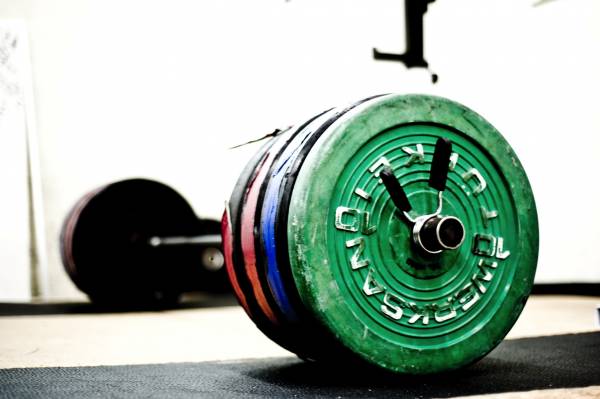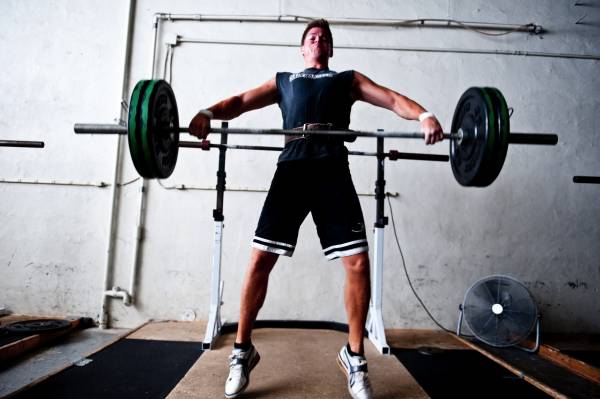Our minds are one of the least discussed factors in success and failure. We think more of what weightlifting program to follow, what to do on our rest days, and what to eat than we do about how best to utilize the most powerful tool in our arsenal.
When it comes to personal records and maximal effort, our minds shy away because they like the neat and the organized. What they don’t like is the dark place we have to go to in order to crank out our new personal records. Our minds like R&R, repeat and recycle. They don’t like hitting the redline and trying to surge past it into new ground.
So if we let them, they plateau.
You may have found yourself a great coach and a great place to train, your technique is improving, your times are getting faster, your weights are heavier – things are progressing logically, for the moment. And then you ask yourself to push just a little harder, and out of the blue, your progress has flat-lined.
You find yourself stagnating away, even though you are doing all the right things for mobility, nutrition, muscle care, and supplements. You find yourself failing at the same weight, day after day, week after miserable week.
You think that maybe you should go more often, maybe you need a one-on-one class, maybe you need a different coach. You don’t think that it is just your mind messing with you, holding you back.
But it is.
In 1984 the Russians realized that Olympic athletes who mentally rehearsed their sport experienced a positive impact on their performance. Since then the area has been widely studied. In the 1990s a researcher showed that just five minutes of mental visualization, versus five minutes of basic tasks yielded a significant difference in overall performance – and the dramatic increase in performance wasn’t limited just to experienced professionals, the researcher showed that it applied to novices as well.1
Just five minutes.
Another researcher showed that mere mental rehearsal triggered responses from the autonomic nervous system, which in turn improved athletic performance. It seems that the simple act of visualizing a movement, be it an Olympic lift, a desired gymnastic skill, or an overall performance, helps in the construction of schema.2
 Heck, one study even showed that people who carried out virtual weight training workouts increased their muscle strength by 13.5%. 13.5%! For simply thinking about lifting weights. That was almost half of the gains seen by the group that actually lifted weights (they saw a 30% increase in muscle strength).3
Heck, one study even showed that people who carried out virtual weight training workouts increased their muscle strength by 13.5%. 13.5%! For simply thinking about lifting weights. That was almost half of the gains seen by the group that actually lifted weights (they saw a 30% increase in muscle strength).3
So why does visualizing success work? It works because you imagine yourself performing whatever task with perfect form.
You see yourself lifting a new PR off the ground, you see yourself above the rings after a perfectly executed muscle up, or you see yourself running Pose method. And when you see yourself doing all of these amazing things, your brain is creating a neural pattern, one that your muscles will follow tomorrow when you are in the gym.4
The best part is that visualizing success isn’t particularly difficult or time consuming (really, five minutes a day is like brushing your teeth one more time a day).
If you have the time, you can check out some great reading on sports psychology. I would recommend 10-Minute Toughness by Jason Selk, Finding Your Zone by Michael Lardon and David Leadbetter, An Athlete’s Guide to Sport Psychology by Tony Reilly, or Mind Gym: An Athlete’s Guide to Inner Excellence by Gary Mack.
But you can also just jump right on in. There is no right way to practice visualization, you can do it at the gym sitting on a stack of weights or at home under warm covers, in a loud bustling area or in a quiet out cove. You don’t even have to put in five minutes, just put in whatever time you can.
 During that time you want to mentally rehearse your movements, think about the bar coming to rest on your chest, the stomp and placement of your feet in your jerk, the sound of the weight crashing to the platform after you have successfully completed the lift. Set yourself a very specific goal, imagine achieving your goal, see yourself achieving your goal, see all of the detail with all of your senses. Hear your coach screaming, feel the sweat trickling down your forehead, smell the plywood, see the plates on the bar, taste the victory.
During that time you want to mentally rehearse your movements, think about the bar coming to rest on your chest, the stomp and placement of your feet in your jerk, the sound of the weight crashing to the platform after you have successfully completed the lift. Set yourself a very specific goal, imagine achieving your goal, see yourself achieving your goal, see all of the detail with all of your senses. Hear your coach screaming, feel the sweat trickling down your forehead, smell the plywood, see the plates on the bar, taste the victory.
Like Muhammad Ali did each time before entering the ring, tell yourself, again and again, “I am the greatest.” Visualize your success, succeed before even attempting the weight for real. Let your mind work for you.
References:
1. Isaac, A. R. (1992). Mental Practice- Does it Work in the Field? The Sport Psychologist, 6, 192-198.
2. Roure, R., et al. (1998). Autonomic Nervous System Responses Correlate with Mental Rehearsal in Volleyball Training. Journal of Applied Physiology, 78(2), 99-108.
3. Ranganathan V.K. (2004) From mental power to muscle power –gaining strength using the mind. Neuropsychologia, 42(7) 944-56
4. Porter, K., Foster, J. Visual Athletics. Dubuque, Iowa: Wm. C. Publishers, 1990.
Photos courtesy of Journal Menu.






